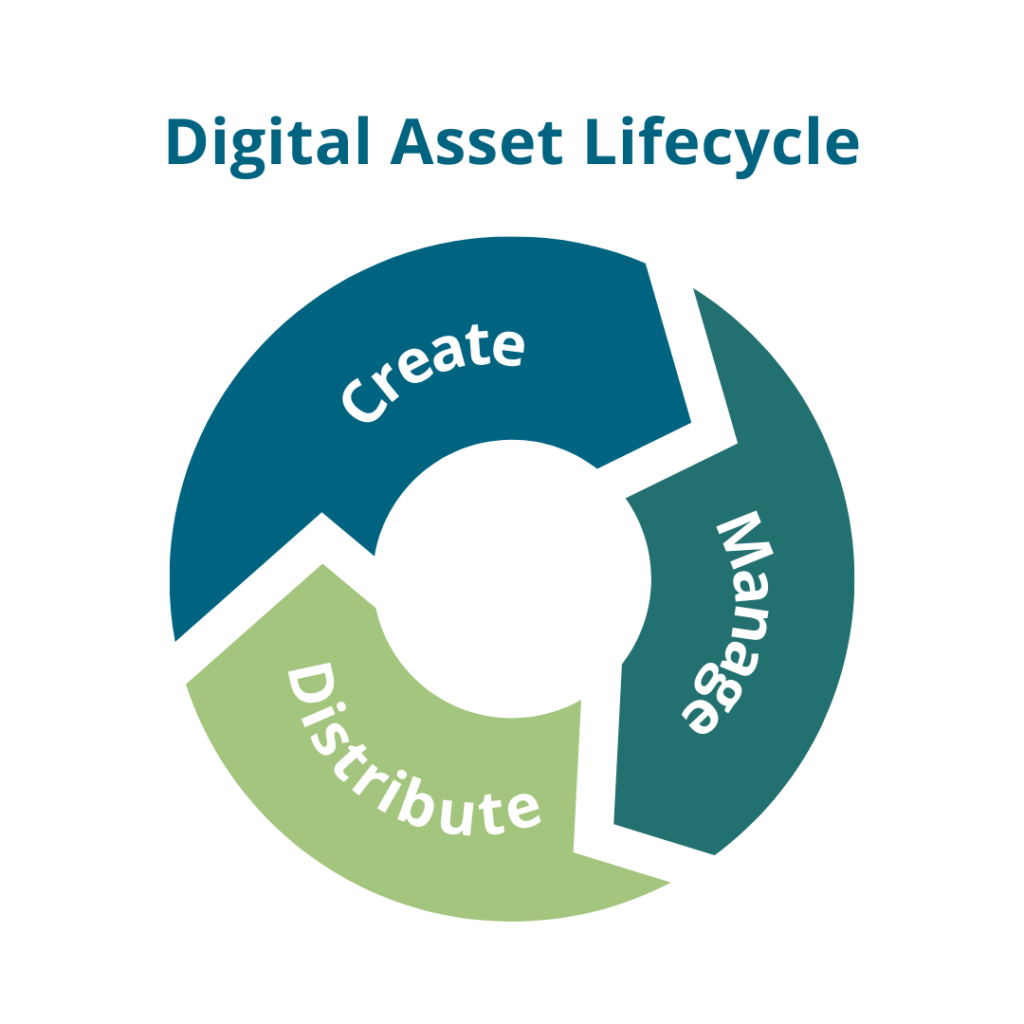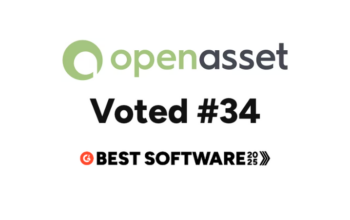Over the past few years, the shift to a remote work environment has emerged as a growing trend, bringing many benefits. These benefits include increased productivity, improved work-life balance, and better employee well-being.
Remote work has won the hearts of employees, as 59% of workers report being more likely to choose an employer that allows remote work rather than one that doesn’t. Moreover, as of 2023, ZIPPIA statistics show that 27% of U.S. employees work remotely.
However, as teams spread across different geographies and time zones, the challenge intensifies: How can we ensure seamless collaboration and easy access to essential digital assets?
With the right systems and tools in place, organizations can readily navigate and address these challenges. This is where Digital Asset Management (DAM) comes in—a solution tailor-made to bridge these gaps.
While anyone in an organization can benefit from a DAM solution, in this blog, we’ll take a look at how it specifically supports remote teams. We’ll explore how DAM tools not only support remote work but also play a pivotal role in enhancing collaboration and ensuring that crucial assets are always within reach. By the end of this blog, you will have a better understanding of how DAM tools facilitate remote work and collaboration among distributed teams.
What Is Digital Asset Management?
Digital Asset Management (DAM) refers to storing, organizing, retrieving, and sharing digital assets such as photos, videos, graphics, and documents in a centralized system.
A DAM software simplifies controlling and managing access to the stored assets, ensuring consistency in branding and content distribution, streamlining workflows, and enabling teams to find and repurpose assets to meet diverse business needs quickly.
Leveraging metadata, sophisticated search capabilities, and access controls, DAM solutions optimize the value and lifecycle of digital content. DAM enhances organizational efficiency by providing the ability to manage and adapt assets throughout their lifespan. This guarantees a streamlined workflow.

What Are the Challenges Remote Teams Face?
The rise in remote work doesn’t necessarily mean it comes with seamless implementation for companies. The goal is to enable teams to work together on tasks and securely share files with ease. However, the surge in remote work over the past three years has introduced notable content and workflow challenges.
Let’s take a look at those challenges.
1. Storage and Organization
Without a centralized system, digital assets can end up scattered across diverse platforms. For example, when teams are spread across different time zones, assets get stored in various places—local drives, cloud storage, Slack channels, etc. This scattered storage makes it difficult to quickly find and access the right assets.
Moreover, as your remote team expands and your digital asset library grows, traditional file management and storage solutions with basic features become increasingly insufficient. Traditional storage solutions, like shared drives or basic cloud storage, often lack advanced organizational features. This disorganization can also result in difficulty in searching. It may also lead to mislabeled and lost assets, outdated versions, or even brand inconsistency.
Ensuring that every team member can access the most recent version of a digital asset or know the exact location of specific assets is crucial. A solution that offers advanced AI tagging, metadata features, and searching capabilities can help.
2. Synchronizing Workflows
In a distributed team setting, aligning tasks and keeping everyone on the same page becomes increasingly complex. Consistency and organization in workflows is important to prevent errors and inefficiencies.
Coordinating workflows becomes especially difficult for teams with members in different states or countries. Without face-to-face interactions and a shared physical workspace, members might work at different paces or even duplicate efforts.
Tools for remote work that facilitate asynchronous teamwork are essential for smooth project collaboration among team members. Utilizing tools specifically designed for multi-party collaboration ensures that everyone can access the required information precisely when it’s needed.
3. Team Collaboration
Digital assets require feedback and revisions. In an office environment, co-workers can effortlessly engage in discussions regarding current and future projects. However, in a remote setting, it becomes challenging to track asset versions, gather timely feedback, and ensure everyone is working with the latest version.
When multiple individuals work on a single asset, it poses a significant challenge. This situation can lead to version control problems, causing lost or overwritten changes, confusion, and reduced efficiency.
4. Team Communication
Effective communication is vital to any successful team, more so for remote ones. When teams are spread across locations, there’s a heightened risk of misunderstandings or missed messages. This lack of clear communication can lead to inefficiencies, mistakes, and frustrations, making a centralized tool for remote work essential.
Moreover, using multiple, disconnected tools can disrupt communication flow. For instance, if a team uses one tool for messaging, another for file storage, and yet another for project management, important information can slip through the cracks. Tools that offer popular integrations with your most used platforms can promote clearer communication.
5. Security and Privacy
With team members accessing assets from various networks, often personal and unsecured, there’s a heightened risk of data breaches or unauthorized access. Many cloud-based storage solutions don’t provide the highest level of security for collaborative projects within a distributed team.
Sharing sensitive company materials among remote teams can make them vulnerable to cyberattacks or unauthorized third-party access. Such breaches can be expensive and harm your business’s reputation.
Companies must ensure that digital assets remain secure, even outside the traditional office environment. Companies should take the proper precautions to ensure that only those who need to see certain data and files have access to it. Tools with robust security features can protect assets, allowing only authorized personnel access.
How Can DAM Facilitate Remote Work?
Now, let’s take a look at the different ways DAM tools facilitate remote work and collaboration among distributed teams.
Improves Storage and Organization
A DAM system centralizes all digital assets, ensuring that no matter where team members are located, they access the same repository. With an advanced DAM system, you don’t have to worry about unorganized file storage. Their organizational structures allow assets to be tagged, categorized, and indexed.
This makes searches quick and efficient, eliminating the issues of mislabeling, outdated versions, and brand inconsistency. The built-in versioning feature ensures everyone uses the most recent asset.
Maintains Brand Consistency
A DAM system empowers you with authority over your digital assets and fosters brand uniformity among various creative and branding groups. For example, when a file or image is updated, it can be integrated into your DAM repository and available for access. This ensures that when your remote team requires a file, the correct version is readily available to them.
Streamlines Workflows
A DAM simplifies the distribution process, allowing your remote team to attain a streamlined workflow. It facilitates the seamless sharing of files with colleagues, management, clients, or any other relevant party requiring access to your documents.
DAM systems streamline workflows by setting up standardized processes. Automated workflows can be established to align tasks, ensure approval processes are followed, and facilitate asynchronous collaboration.
The system will notify relevant members about task statuses or changes, ensuring the entire team is updated in real-time, preventing duplicate efforts or misalignment.
Strong Team Collaboration
While DAM tools can’t change time zones, they can help by providing asynchronous collaboration features, ensuring that work progresses smoothly regardless of where team members are located.
A DAM system provides a singular space for collaboration on digital assets. Robust DAM systems offer seamless integration with your favorite project management and communication tools. This facilitates remote teams in attaching assets to particular projects, making edits, approving content, and engaging in collaborative discussions.
Moreover, real-time feedback and annotation tools allow team members to suggest or make changes, and version control ensures that everyone is aware of, and working on the most recent asset version.
This centralized approach to collaboration ensures clarity and reduces the risks associated with multiple people working on the same asset.
Effective Team Communication
Continuing with the benefits of integrative DAM platforms, they can also serve as a hub that can often be integrated with communication tools. This ensures a seamless flow of information without the need to jump between different platforms.
Rather than resorting to extensive emails or juggling multiple communication tools, a DAM system simplifies communication. For example, it allows teams to approve and verify workflows from a unified hub. This centralization empowers teams to exchange feedback and recommendations directly within the DAM, eliminating dependence on separate communication platforms.
Features such as comments, annotations, and notifications on assets directly within the DAM facilitate clear communication, ensuring feedback and updates are centralized and tied directly to the assets in question.
Maximum Security and Privacy
Top-tier DAM systems prioritize security. They provide features like role-based access control, encryption at rest and in transit, and two-factor authentication. DAM also provides advanced user permissions for sensitive digital assets so that private files are not out there accidentally for everyone to see.
By centralizing assets in a secure DAM system, businesses can control who accesses what, track asset use, and ensure compliance. These systems also allow for detailed audit trails, ensuring transparency and accountability for all interactions with the digital assets.
Boosts Productivity
Remote work brings distractions and the challenge of self-management. While DAM tools can’t eliminate all distractions, they can streamline tasks, reduce the time spent searching for assets, and ensure smooth collaboration—all factors that can boost productivity.
For example, instead of spending time emailing peers or depending on various tools and platforms for asset verification, team members can effortlessly retrieve what they need straight from the DAM. This diminishes the challenges posed by remote collaboration, conserves time, and enhances overall organizational productivity.
Empower Your Remote Team with OpenAsset
For organizations with a remote workforce, the significance of digital asset management (DAM) cannot be overstated. Ensuring seamless access to essential digital assets not only streamlines operations but also improves overall productivity.
By integrating a complete tech stack, your company can avoid potential setbacks, enhance employee satisfaction, and elevate the customer experience.
If you’re interested in a DAM for your AEC firm, OpenAsset’s Digital Asset Management platform makes AEC proposals simpler, faster, and more successful. That’s why 99% of customers renew.
Curious about how OpenAsset can improve your workflows and help you create better proposals for your AEC firm? Request a demo with a DAM expert from our team.





